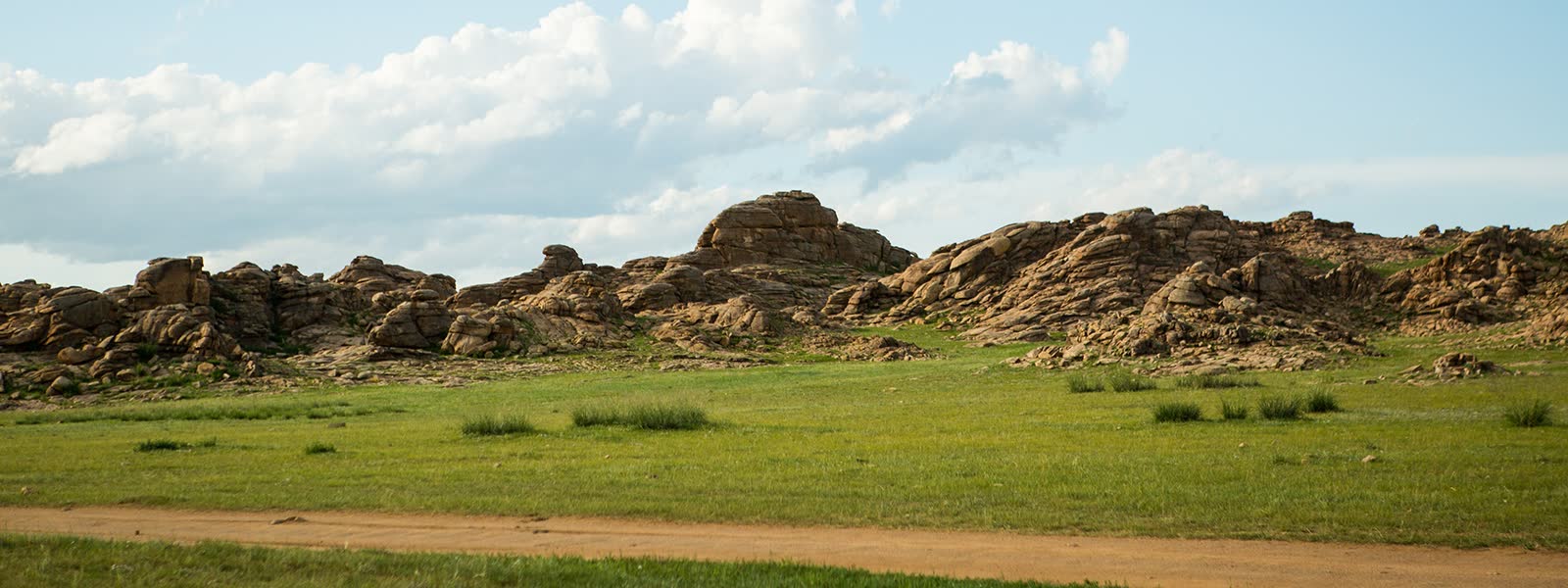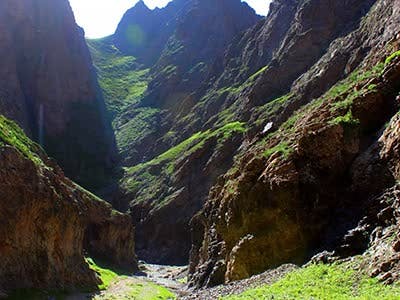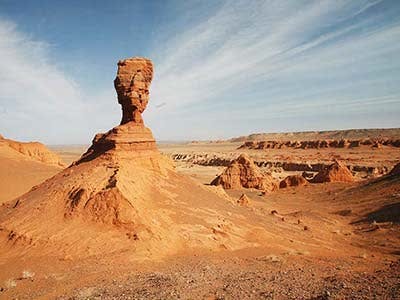Baga Gazariin Chuluu
⛰️ BAGA GAZARIIN CHULUU
Baga Gazariin Chuluu, meaning “Stone of the Little Place,” is a striking granite formation located in Delgertsogt soum, Dundgovi Province, approximately 230 km south of Ulaanbaatar. Spanning an area of 15 km by 10 km, this natural marvel rises to an elevation of 1,768 meters at its highest point, Takhilgat Mountain .
The region is renowned for its unique rock formations, ancient petroglyphs, medicinal springs, and diverse wildlife, making it a haven for hikers, history enthusiasts, and spiritual seekers alike.
📌 QUICK FACTS
| Icon | Detail |
|---|---|
| 📍 Location | Delgertsogt soum, Dundgovi Province, Mongolia |
| 🪨 Geology | Granite rock formations |
| 🏔️ Elevation | Up to 1,768 meters (Takhilgat Mountain) |
| 🌿 Flora & Fauna | Over 20 medicinal herbs; wildlife includes marmots, ibex, and mountain sheep |
| 🕍 Historical Sites | Ancient petroglyphs, burial mounds, and monastery ruins |
| 📅 Best Time to Visit | May–September |

🌟 HIGHLIGHTS
🪨 Unique Rock Formations
Marvel at granite structures sculpted by nature, some resembling yurts and animals.
🧘 Sacred Springs
Visit the Eye Spring, believed to have healing properties for eye ailments .
🏺 Ancient Petroglyphs
Discover rock carvings, including depictions of deer and human figures, dating back to the Bronze Age .
🏞️ Surtiin Am Canyon
Explore this narrow canyon adorned with aspens and the ruins of a 17th-century stone temple .
🕍 Delgeriin Choir Monastery
Visit the remnants of a monastery established in 1918 by the renowned scholar Zava Damdin .
✨ SPECIAL FEATURES
📜 Historical Significance
The area houses over 60 ancient tombs and burial mounds linked to the Xiongnu tribe .
🧭 Spiritual Retreat
Legends suggest that Chinggis Khaan once rested here, adding to its mystical allure .
🌿 Biodiversity
Home to rare medicinal herbs and diverse wildlife, including marmots, ibex, and mountain sheep .
🗺️ NEARBY ATTRACTIONS
🏛️ Süm Khökh Burd – Ruins of a 10th-century temple located on an island in a seasonal lake .
🏜️ Tsagaan Suvarga (White Stupa) – Striking limestone formations resembling a stupa.
🏯 Ongi Monastery – Ruins of a once-significant Buddhist monastery along the Ongi River.
🙋 FAQ
❓ How do I get to Baga Gazariin Chuluu?
It’s approximately 230 km south of Ulaanbaatar, accessible via a 4–6 hour drive. The route includes paved roads to Mandalgobi, followed by a segment of unpaved roads.
❓ Are there accommodations nearby?
While there are no formal accommodations directly at Baga Gazariin Chuluu, nearby towns and tourist camps offer lodging options. Camping is also a popular choice for visitors.
❓ Is there an entrance fee?
A nominal fee may be charged, often contributing to the site’s maintenance and preservation efforts.
❓ What is the best time to visit?
The optimal visiting period is from May to September, with milder weather conditions.
❓ Can I visit independently?
While independent visits are possible, joining a guided tour enhances the experience through detailed historical context.
🧳 VISITOR TIPS
🥾 Footwear – Wear sturdy shoes suitable for uneven terrain.
💧 Hydration – Carry sufficient water, especially during warmer months.
📷 Photography – Early morning or late afternoon offers the best lighting for photos.
🧭 Navigation – A local guide can provide valuable insights and ensure a comprehensive visit.
🧘 Respect – Maintain a respectful demeanor, especially in active religious areas.
🌍 WHY VISIT?
🌄 Unique Landscapes
Experience a rare blend of desert, rock, and sky found nowhere else in Mongolia.
🧘 Mystical Atmosphere
Connect with Mongolia’s ancient spiritual traditions.
📚 Cultural Legends
Discover stories of monks, bandits, and ancient heroes tied to the rocks.
🚶 Active Exploration
Whether hiking, climbing, or meditating, the area invites movement and stillness alike.
RELATED DESTINATIONS
Explore Mongolia’s Khongor Sand Dunes—massive singing dunes, camel rides, and desert oases in the heart of the Gobi. A surreal and stunning escape.
Discover Yol Valley in Mongolia’s Gobi Gurvansaikhan National Park—home to icy canyons, rare wildlife, and scenic hiking trails.
Explore the stunning red cliffs of Khermen Tsav Canyon in Mongolia’s Gobi Desert—home to fossils, legends, and otherworldly desert beauty.


